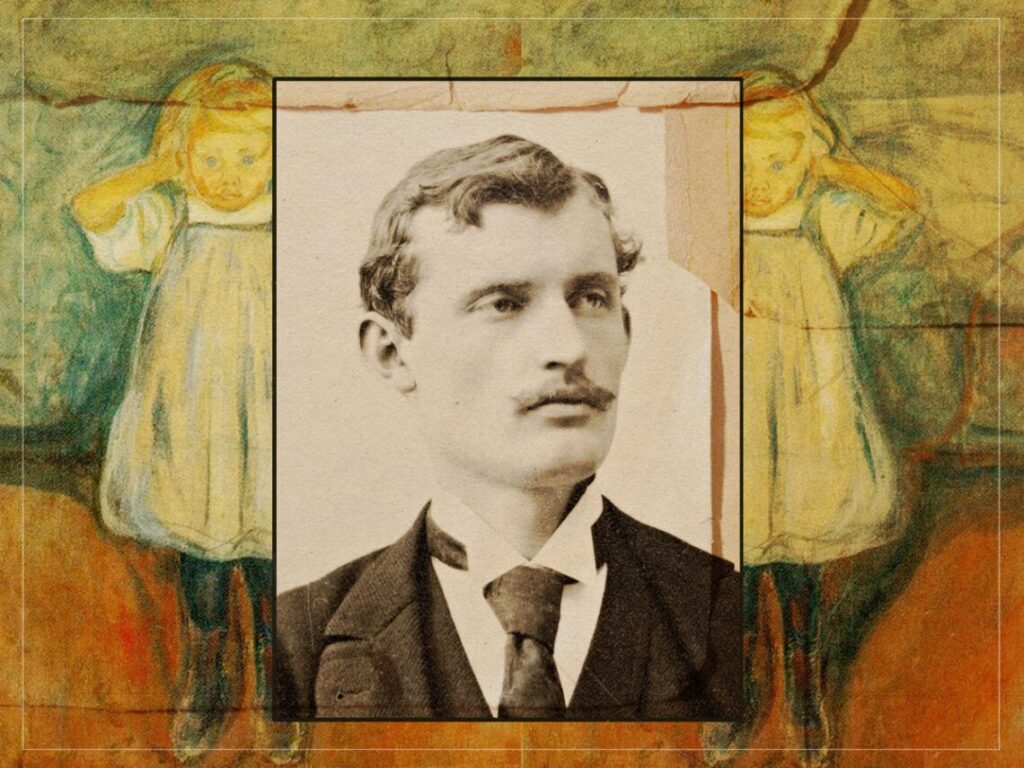‘Death and a Child’: Edvard Munch’s most haunting painting
 Posted On
Posted On
(Credits: Far Out / Wikimedia Commons / Kunsthalle Bremen)
Throughout Haruki Murakami‘s long, languid, stretched-out, and meandering 2017 novel Killing Commendatore, the unnamed narrator is visited by characters he has painted in the various pieces and portraits he works on throughout the story. His creations step off of the canvases he paints on and alternately get into his ear and under his skin, driving him to act as the book builds towards its supernatural conclusion.
The idea of a painting being so vivid that it takes on a life of its own, of being so convincing that any and all of its painted eyes seem to follow you around the room, or else that it starts to make noises in the night or even draws you into its frozen world of images (or much worse, that it climbs out of its frame into our world), is a commonly used trope in film, television, stories and song.
Whether it’s the haunted paintings in the 2019 Jake Gyllenhaal film Velvet Buzzsaw or going all the way back to Oscar Wilde’s The Picture of Dorian Gray, art has had a hold on our horror stories for as long as we’ve had either medium. The Bates House in Alfred Hitchcock’s Psycho was inspired by Edward Hopper’s painting House by the Railroad, while one of the most iconic scenes in The Exorcist was inspired by René Magritte’s painting The Empire of Lights.
One of the most recognisable pieces of art in the world, and one of the most recognisable horror characters of modern times, came from Edvard Munch and his 1893 painting The Scream. However, while his crying character may have inspired a series of horrors on the big screen, it was his painting from six years later, Death and the Child, which is said to have inspired the most real-life horrors and hauntings.
No happening is more horrific than the untimely loss of a family member, though, and before he was out of his teens, Munch was well acquainted with death. His mother died from tuberculosis when he was only five, and just ten years later, his sister was laid low by the same ailment. As if he hadn’t lost enough, his father followed soon behind. Towards the end of his own life, Munch recalled the impact that these deaths had had on his life and on his work, writing that “my home was the home of illness and death. I have never gotten over the calamity there. It has also influenced my art”.
It is undoubtedly the two women who he had loved and lost so early on in his life who are the focal points of his painting Death and the Child. In the image, his young sister is standing despairing, empty-eyed and holding her hands to her head while her mother, pale as her pillows, is laid out on a deathbed behind her. Much like The Scream, Munch manages to build up the tension of the image even in all the blank space surrounding his character, with all the shading and detail coalescing around and forcing your eyes towards the two characters, one no longer living and one not living for much longer.
Perhaps, just like the unnamed main character in Killing Commendatore, Munch put so much of himself and his own emotions and experiences into his paintings that he imbued some of his life to his art and returned his mother and sister to life in the artwork. It could explain why, over the years, some viewers have reported that the girls’ eyes have followed them around the room when they’ve been in the picture’s presence or else why others have reported hearing the rustling of bedsheets when viewing the painting. Some owners of the work have even said that, on occasion, the girl has gone missing from the painting entirely. Perhaps she has been trying to escape from all the death that has brought her back to life.
[embedded content]
Related Topics


